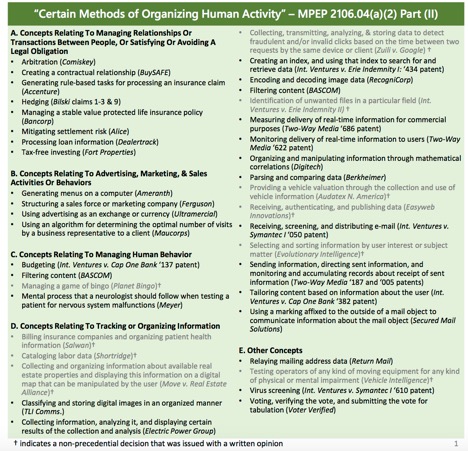Judge Taranto commented on what “organizing human behavior” means to him, in the oral argument of Interval Licensing v. AOL.
My impression was that his definition is much more limited than the broad categorical net that the USPTO has cast in its quick reference sheet:
I like how the USPTO has labeled this, however. Rather than saying that all methods of organizing human activity are abstract ideas, the USPTO has noted that only certain methods of organizing human activity have been found by the CAFC to meet step 1. In fact the USPTO has cautioned its examining corps with specific instructions not to generalize the “human activity” language:
II. “CERTAIN METHODS OF ORGANIZING HUMAN ACTIVITY”
The court have used the phrase “methods of organizing human activity” to describe concepts relating to interpersonal and intrapersonal activities, such as managing relationships or transactions between people, social activities, and human behavior; satisfying or avoiding a legal obligation; advertising, marketing, and sales activities or behaviors; and managing human mental activity. The term “certain” qualifies this category description as a reminder that (1) not all methods of organizing human activity are abstract ideas, and (2) this category description does not cover human operation of machines.
MPEP §2106.04(a)(2).
You can listen to the entire oral argument of Interval Licensing v. AOL here:
You can read the court’s opinion here: [Link].
